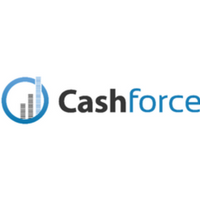How will Open Banking impact Treasury?
| 20-9-2019 | treasuryXL | BELLIN
 Interview with Karsten Kiefer on open banking, APIs and the future of bank connectivity
Interview with Karsten Kiefer on open banking, APIs and the future of bank connectivity
With financial data increasingly digitized and moved to the cloud, disruptive approaches have become available to fintechs and corporates have gained access to new and revolutionary opportunities. One such opportunity is open banking, also known as API banking. In this article, we take a closer look at open banking and the potential benefits of current trends for treasurers. Karsten Kiefer, Product Manager and Solutions Manager at BELLIN, introduces us to the latest developments and assesses their impact on corporate treasury.
The European Payment Services Directive 2 (PSD2) sets rules for access to payment accounts but it has also caused great uncertainty. Is this the beginning of open banking for everyone in Europe? And what does the directive mean for treasury?
One of the provisions of PSD2 forces European banks to provide a standardized access interface, known as API, to third parties, which enables technical access to the bank’s customers’ accounts. This is an attempt by the regulator to break up the banks’ monopoly on account information and to boost competition amongst payment service providers.
The directive clearly stipulates the type of information banks have to give access to and the scope of services associated with it. For example, when it comes to payments PSD2 API access is restricted to SEPA single payments. Few banks, if any, will support bulk payments, FX payments etc. as additional services. This is why for the time being this technology is only of limited use to corporate treasury. It is definitely in no way comparable to established channels such as EBICS, H2H or SWIFT.
Where do you see the main advantages of open banking for treasury? When will corporate financial departments adopt open banking?
Changes have been flooding the international payments sector, and open banking is only one of the waves to ride. Demand is driven by developments in the consumer goods sector, where mobile, real-time payments are rapidly gaining ground, with providers springing up all over the place. 24/7/365 availability of payments services is highly relevant for treasurers. This has also been the driving force behind developments in connection with established channels, such as SWIFT or EBICS, including the SWIFT g4C technology that enables real-time information on payment transactions. For corporates who use a treasury management system with an integrated payments platform, open banking has already become a reality.
How does open banking with a treasury management system work?
A treasury management system with an integrated payments platform, such as tm5 by BELLIN, enables multi-channel access to banks. There are standardized channels for specific regions, such as EBICS, or the BELLIN SWIFT Service that provides access to the global SWIFT Network. Another connectivity option is direct host-to-host connections to specific banks and their networks. APIs represent an additional technology to connect banks and corporates, and in the future, this will become more and more relevant. Today, the BELLIN Payment Gateway enables access to real-time payment transaction information and a company’s global financial status.
Are there any challenges associated with API interfaces?
Many of the banks today that can connect via two or even three channels are working on APIs. So this will become an additional bank connectivity option. However, we need to bear in mind that such an API must bring added value and additional benefits. Otherwise, you are better off using one of the more established channels. Looking at the API specifications of several major banks in more detail, you will realize that there are minor standardization options at the moment. Everyone is talking about APIs but in fact, every bank has their own! Ultimately, it is irrelevant for the customer or the user which technological options we have available to connect a financial institution.
What new aspects does API connectivity bring and what makes it special?
The main difference is the way in which information is made accessible. Intraday account statements are a perfect example. Many banks provide this information at least once or twice a day, some more often. The times vary according to bank, which makes it difficult to gain a complete overview of your financial status at any one time. For EBICS and H2H connections, BELLIN has to actively retrieve this information for clients, while the banks send the data to a company’s BIC in the case of SWIFT Service customers. Corporates have little or no insight into any fluctuations outside these times.
API technology enables two systems to communicate directly. In theory, any API request to a bank requesting intraday account information or the current financial status could be processed and responded to in real time. This would be a huge leap towards the concept of an “instant treasury:” It would enable treasurers to trigger information directly and to receive the latest data at the touch of a button. Unfortunately, few banks are able to offer such a service, as it would require not just an interface but also powerful and modern banking systems.
So the flood of information triggered by APIs very quickly hits a wall, reined in by banking systems. Do you see any solutions to this problem?
So-called WebSocket interfaces are a step up from APIs. This technology would see a bank notify a client as soon as any relevant data has become available. Corporates could retrieve this information promptly and would always have the latest information. This is a very intelligent reversal of the logic described earlier and would get rid of any redundant data communication. Customers or their service providers would only ever communicate with a bank when the bank has notified them of available data. You could compare a notification that money has been credited to your account to notifications sent by LinkedIn or YouTube: As soon as something new happens, it’s shown to you and you’re notified.
Will these new technologies mean the end for existing solutions such as EBICS?
Not at all. EBICS is a great example. The EBICS standard is long established and thousands of corporate clients use it. Banks have invested a lot of money in these systems. Intelligent updates to these standards will be the key. The German Banking Industry Committee, the industry association of the German banking industry, is planning specifications for 2020 and working on introducing technology that will enable banks to notify corporate clients as soon as relevant data is available to be retrieved from the EBICS bank server. From a technological point of view, this will be a combination of the established EBICS protocol and the latest API technology. I think this is the perfect combination of old and new standards and brings enormous advantages to customers with little or no adjustments required.
What would you recommend treasurers do right now?
My advice would be to remain calm and wait it out. At the moment, APIs and the opportunities associated with them are being hyped up. But in reality, very few banks have actually developed new services.
At BELLIN, we develop and integrate APIs every day, whether it is to communicate with transaction repositories, to integrate SAP systems or to connect our BELLIN Connect app. We have decades of experience when it comes to banking communication and have just launched API projects with three major international banks. Our aim is to create viable use cases that add value to our treasury clients.
Authors:



 Anja Biehler
Anja Biehler








